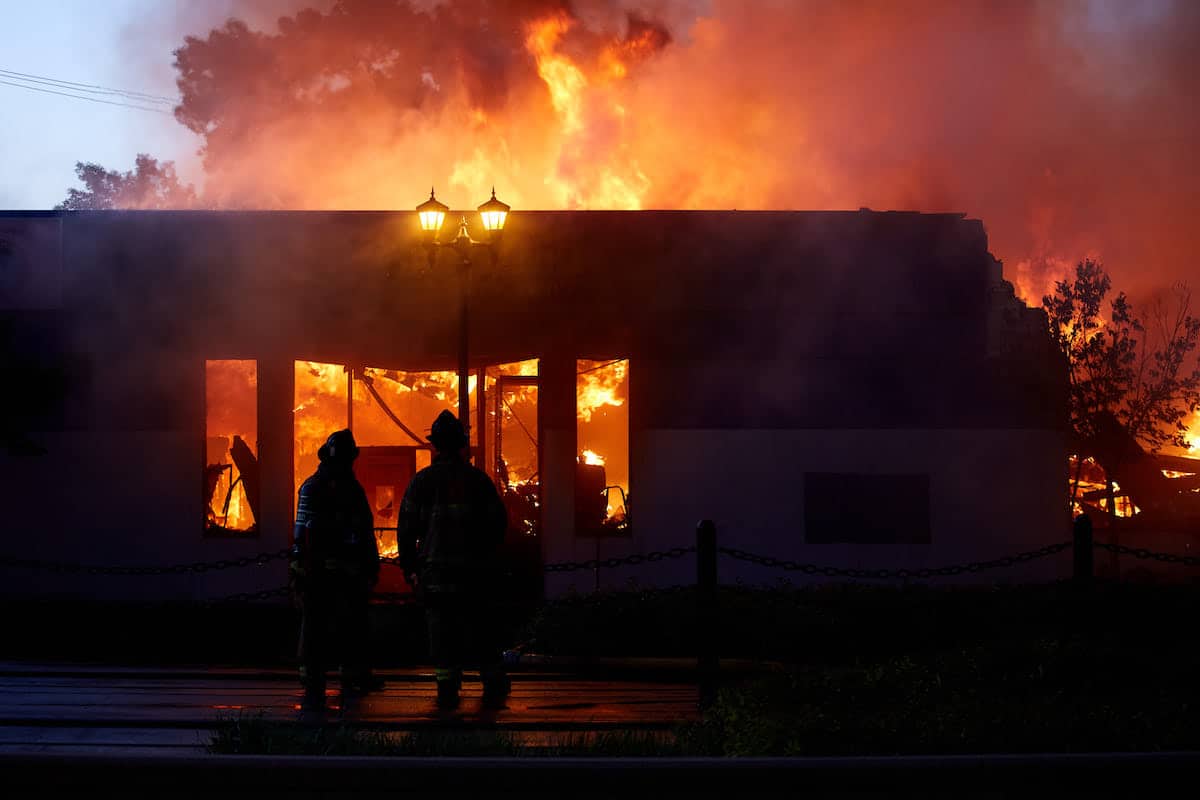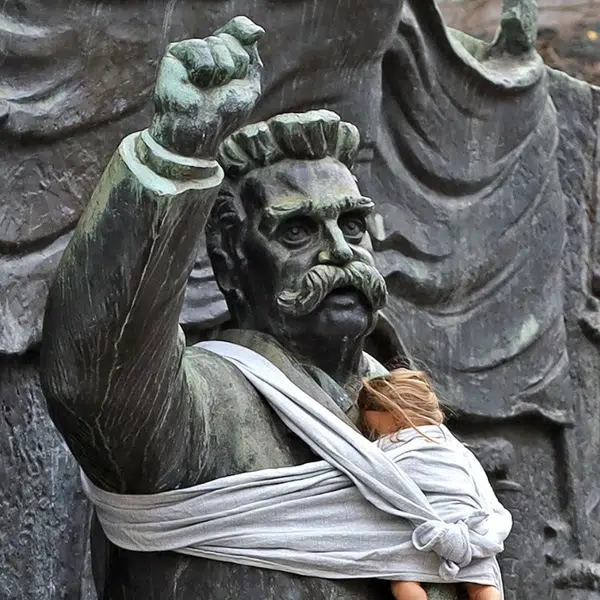
For Dr. Artyom Tonoyan, the need to be politically active started at a young age. Growing up in Soviet Armenia, he saw firsthand how protests could bring a wave of change. So as an avid photographer, it only made sense for him to hit the streets as protests against the police brutality that resulted in the murder of George Floyd took hold across Minneapolis and St. Paul.
His photography is an incredible documentation of this critical moment in American history. Tonoyan spent time at the site of Floyd's murder where a mural has been transformed into a memorial and then ventured to St. Paul, where grief boiled into frustration. His images of protestors (young and old) holding their signs, while simultaneously mourning Floyd and all that his death represents, share the somber yet peaceful side as well as the rage and responding violence.
Buildings were burned, police officers arrived on the scene, and teargas was released on the protestors—Tonoyan included. For Tonoyan, who is a research associate at the University of Minnesota's Center for Holocaust and Genocide Studies, being present was important in order to make sure that the public could have a true visual of what was happening.
We had the opportunity to speak with Tonoyan, who has previously documented the fallout from Philando Castile's killing in nearby St. Anthony, about his motivation for photographing these events and what he saw while in the middle of the protests. Read on for My Modern Met’s exclusive interview.
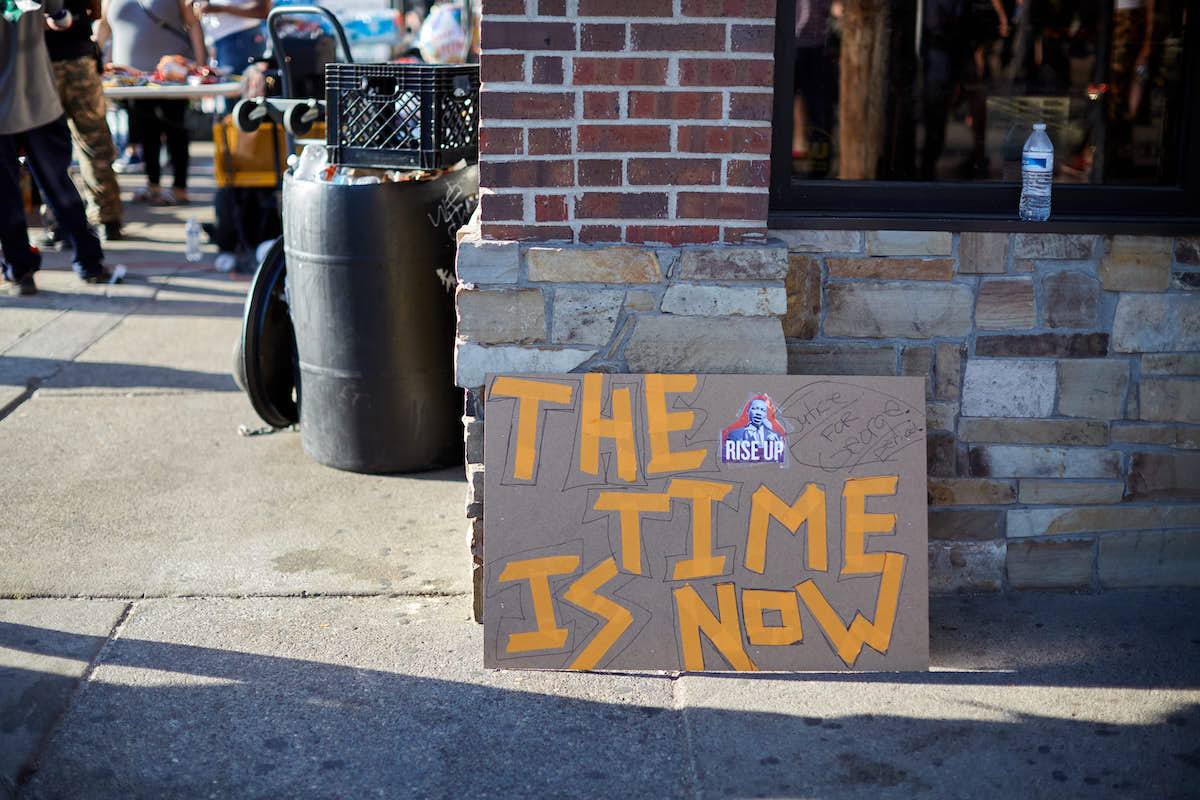
First off, how are you feeling? I know the atmosphere must be tense.
Thank you for asking. At the moment I am feeling fine, which is not to say I am not occasionally worried. Although things have calmed down significantly in Minneapolis and the Twin Cities, it does not mean it is completely under control. Things like this are rarely under control so fast. The inertia may yet pick up pace.
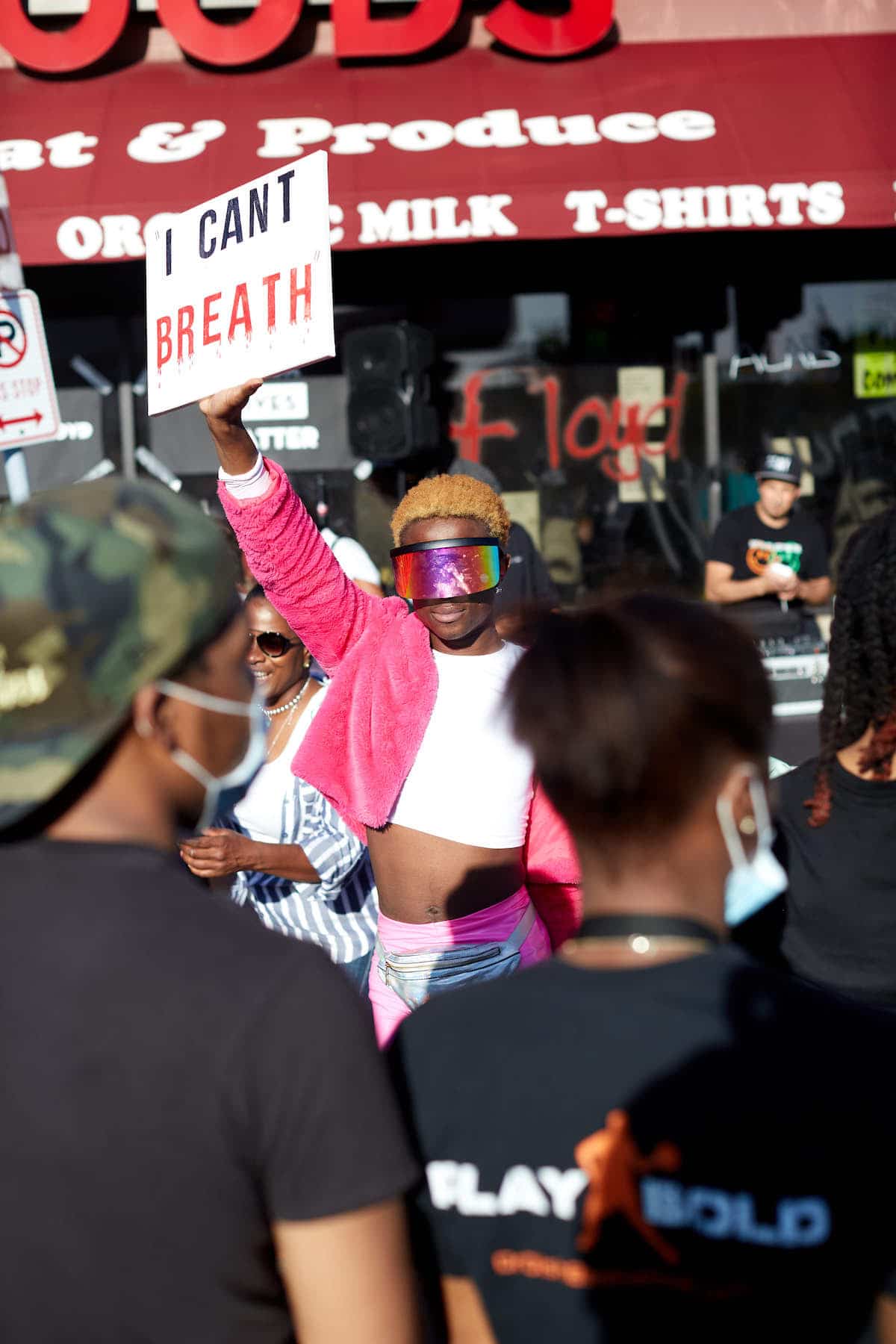
I know this isn't the first time you've documented reaction to the murder of a black American by the police. What compels you to action?
A couple of things. And we may need a brief historical excursus to explain what makes me go out and photograph protests.
I grew up in Soviet Armenia at a time when it was undergoing tremendous ideological and structural changes. After Gorbachev came to power, the two buzzwords that were on everyone's lips were perestroika and glasnost, (meaning restructuring and freedom of speech, respectfully), which basically were attempts at reforming the country by allowing certain liberalizations, both political and economic.
For Soviet Armenians, and for other so-called “captive nations” of the Soviet Union, liberalization meant voicing old political grievances that were hitherto taboo. For Armenians, there were a number of these issues, but none as urgent as the issue of the political and cultural rights of the Armenian minority in neighboring Soviet Azerbaijan, the deteriorating ecology due to industrial waste, which would then grow into a full-blown independence movement from the Soviet Union. And so, in 1988, Armenians in the hundreds of thousands started pouring onto the streets demanding redress of these issues.
I was 12 or 13 years old when you can say I became politicized, to the chagrin of my parents. I had started experimenting with writing poetry and it coincided with the emergence of these stirrings. So I started going to these mass meetings—peaceful gatherings—in the town square in my hometown of Gyumri, composing sometimes really corny poems denouncing the Soviet rule, Gorbachev, the Communist Party and the like. Later, my aunt, who lived in the capital city of Yerevan, would take me with her to the even larger gatherings where the rhetoric was sharper and the atmosphere tenser. But the theatricality of the speakers and the carnivalesque atmosphere were all so seductive and powerful for a young kid.

(Continued) So this sort of attraction has remained with me—seeing, witnessing, and being inspired by the spontaneous and passionate gathering of people for a greater cause than your own. It has always fascinated me how a collective effort can bring about a new social and political reality.
As for the “documentary” aspects, this may sound weird—and I hadn’t thought about it—it is probably in part due to the fact that I lost my diaries and the poetry from that time when an earthquake destroyed our house and my hometown in the winter of 1988. Also being a sociologist and a student of history, for me, the importance of documentary evidence cannot be overstated. I am just obsessed with gathering documents, probably one of the reasons I am yet to finish a book I have been working for several years is because I keep coming across new information that I feel compelled to include in it. Documenting is a way of life for me. That is sort of my mindset in general terms.
So having sort of this background, I have felt compelled to document the aftermath of Philando Castile’s and now George Floyd’s senseless killings; and if the images that I try to capture can move even one person, I will feel vindicated. I try to capture the entire range of emotions in these demonstrations and gatherings and share them with friends and whoever is interested.
I try to convey a story that many people in my social circle (and outside of it) may not have necessarily found interesting or compelling, hoping meanwhile that my images may yet make them feel compelled and interested. Through these images, I try to bring to my friends, colleagues, and anyone interested a visual representation of the social situations that they may not have the ability, or the inclination, or the wish to confront. If they do not come to these situations, I try to bring these situations to them. So in a sense, I try to make them feel less comfortable. I try to prick their taken-for-granted realities.
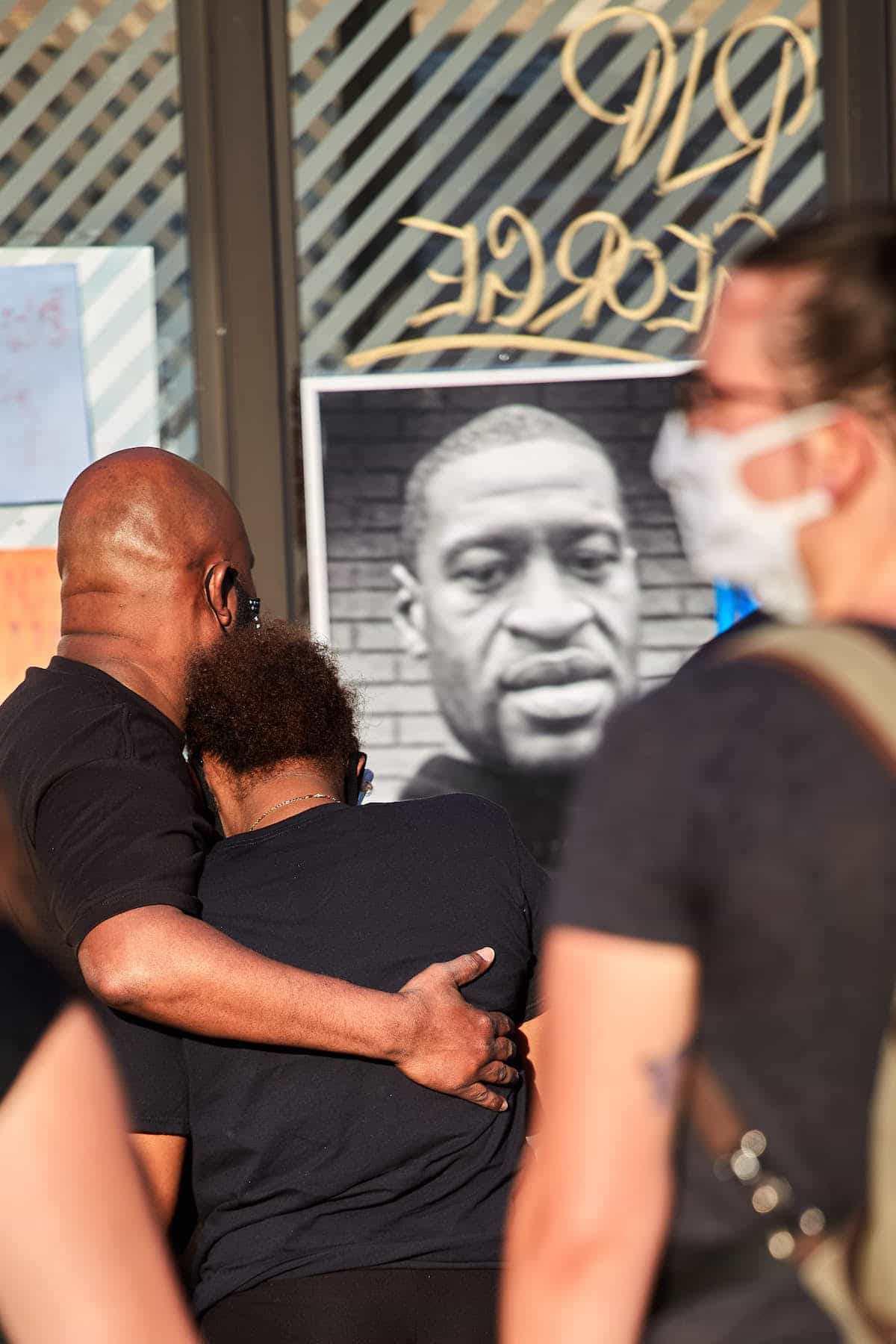

What was the atmosphere when you were in the midst of the protests?
I went to three sites. The first was the site of George Floyd’s killing and it was really one of the saddest situations I had found myself in in a very long time. The atmosphere was mixed, but the general tone was somber. There were angry people, there were grieving people, there were bewildered people—mostly children whose parents were trying to explain what had happened and the children could not register what had happened or what was happening. They could not understand the crying, and the occasional loud wails, and the angry outbursts of the adults around them. It was painful to see them trying to process the burden that they will soon be inheritors of.
The second site was the Third Precinct of the Minneapolis police department, which I found too dangerous to stick around for long as you could sense that something major was going to go down and after snapping some photos there I headed to University Ave. in St. Paul where I witnessed complete mayhem. And at one point I was teargassed. Twice. But I was able to move to safe ground to catch a breather and regain vision before I headed back home.


Why do you feel that these types of protests are important?
The importance of collective social action cannot be overstated. There are countless examples of real political changes taking place due to protests—often peaceful, sometimes not so much. Of course, there’s the counter-argument that changes are best implemented through voting, through the very boring and very long political process. What protests accomplish, however, and which may be their greatest virtue, is that they make political elites sit up and take heed. In a sense, protests are politics by other means.
To add to this, I think it was Kurt Vonnegut that said that, during the Vietnam War, people were irked that the Vietnamese did not fight like ladies and gentlemen, in uniform, that is nice, prim, and proper. And so extending the metaphor, we can say that people feel like protesting like ladies and gentlemen has not worked, or it has had a very limited and qualified success. Certainly, this was the general feeling among the protestors.


Is there any particular moment from the protests that stood out to you?
I think the presence of so many children at the site of George Floyd’s death was really what stood out for me. It was painful to see them there. This should not be anyone’s Introduction to Life 101, let alone for children. But, unfortunately, for many children in the African American community, this is an all-too-painful reality.

What do you hope will come out of this experience?
Historian Lynn Hunt has a great little book called Inventing Human Rights where she discusses the historical origins of human rights, both as a concept as well as a movement. One of the most interesting aspects of the book is how the rise of modern literature in places like France allowed the reader to imagine himself or herself in other people’s shoes so to speak, inspiring fellow-feeling. Stories that writers like Rousseau, Voltaire, and others were telling their readers often portrayed disordered and inharmonic social relations allowing their readers to imagine a more equitable world, a more just society. Although not fictional, I try to tell stories with my photos as well, stories driven mostly by empathy.
